All
the Light We Cannot See
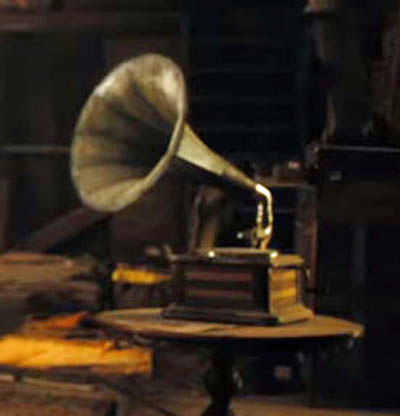
Netflix
Limited Series (2023)
By Doug Boilesen, 2023
This PhonoMovie is based on the
2014 novel "All the Light We Cannot See" by Anthony
Doerr and on its Netflix adaptation which was released in 2023.
Phonographia Movies must have at least one phonograph in the story
and this movie has three phonograph scenes and one radio scene
which was notable for its many broadcasts of the phonograph record
"Claire De Lune.")
The primary setting of the movie
is in Saint Malo, France during World War II. Ettiene LeBlanc
is the "Professor" who had broadcast his educational
program of truth through philosophy and science from his
attic in Saint Malo on radio frequency 1310. The broadcast always
included him playing Claude Debussy's “Claire De Lune.” Werner
Pfennig grew up in Germany as a devoted listener of the Professor's
radio program.
When the Professor's nephew Daniel
LeBlanc and his daughter Marie-Laure flee Paris and come to his
home in Saint Malo the Professor shows his blind grand-niece how
the radio broadcasting system works. She takes over the broadcasts
by using her braille books to read stories like "Twenty-thousand
Leagues Under the Seas" by French writer Jules Verne. The
readings were part of the French Resistance since they provided
the allies with coded messages within the chosen passages spoken
on the program.
Note: All screenshots from this
movie are courtesy of NETFLIX.
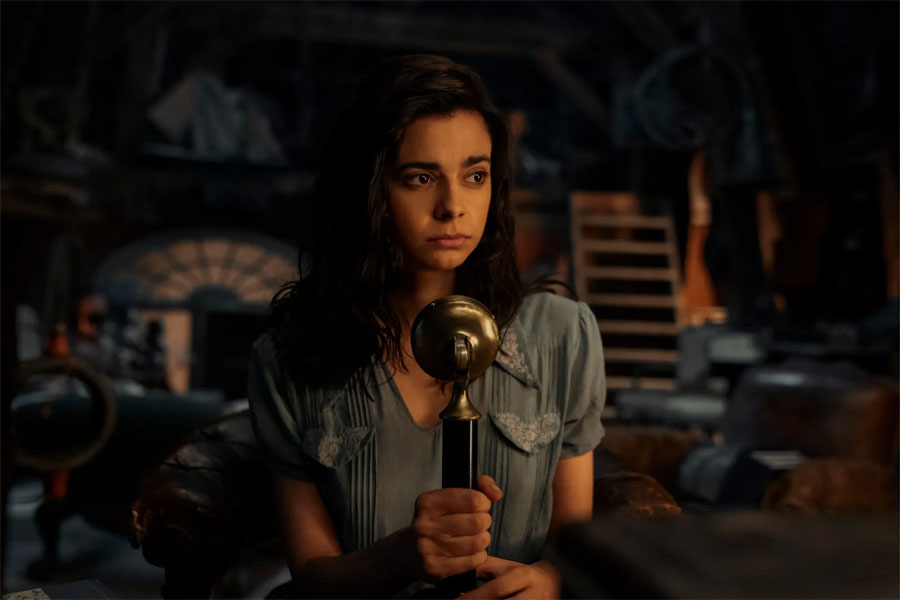
Ettiene the Professor had always
started each radio broadcast with “Clair de Lune” by Debussy playing
its record on his open horn gramophone. It's this song that Werner
Pfennig heard while growing up in Germany and it's the connection
with the Professor's show which eventually leads Werner to Marie-Laure.
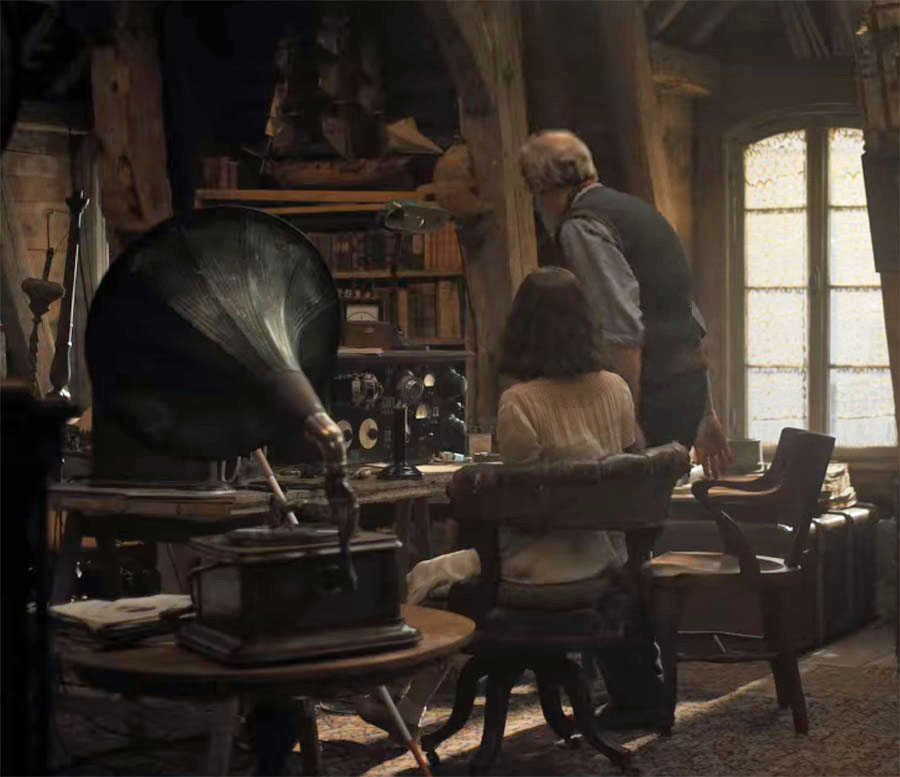
Ettiene and Marie-Laure
in the attic with the radio equipment and the gramophone.
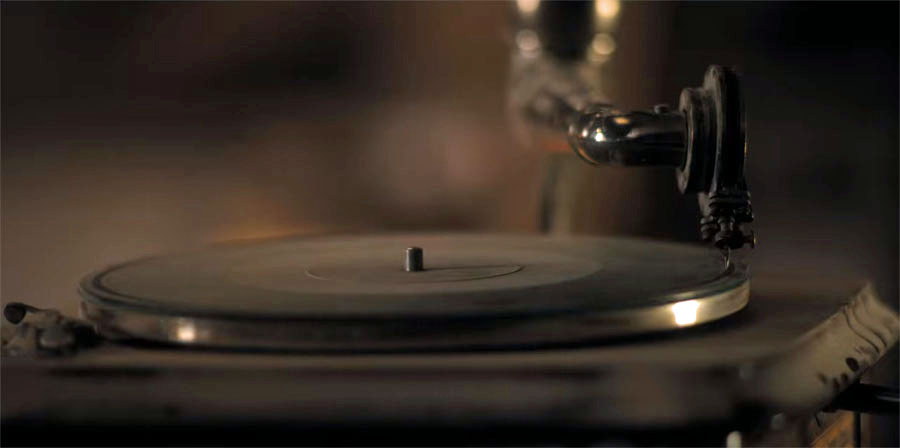
Debussy's “Clair de Lune” played
on the open horn gramophone in the attic is the memorable song
of this movie. It could also be called an "Our
Song" for Marie and Werner who embrace in the attic to
say good-bye with a kiss as "Clair de Lune" plays and
they promise each other that they will someday be together again.
It's a beautiful moment and I thought it was perfect (but it's
not in the original book).
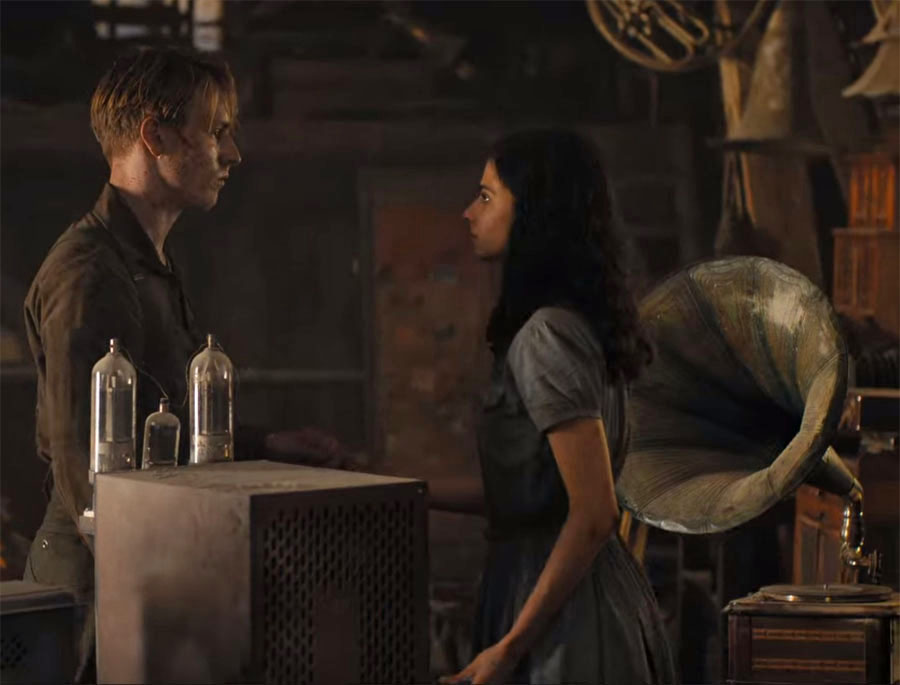
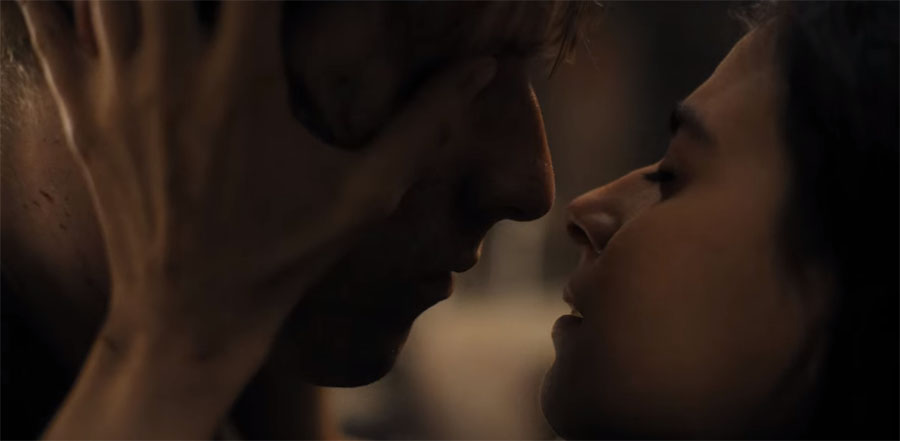
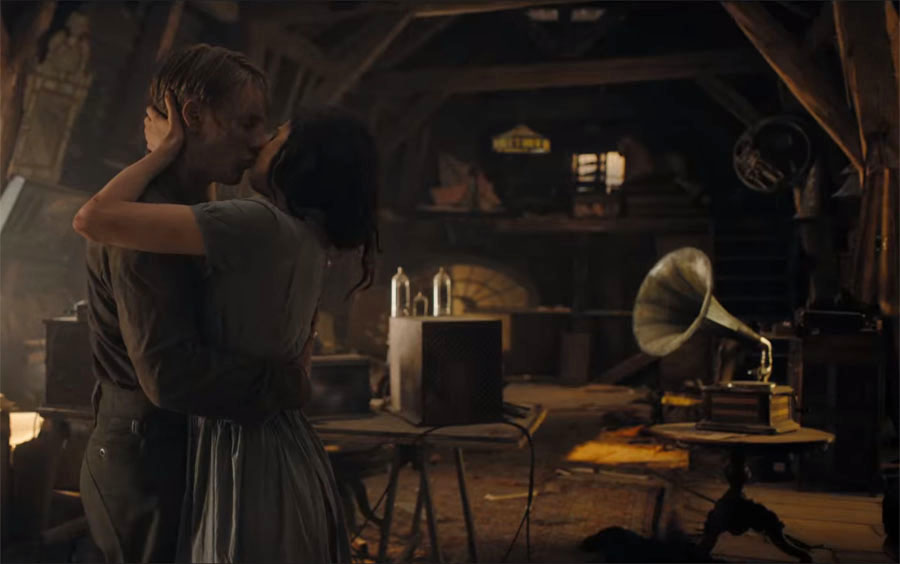
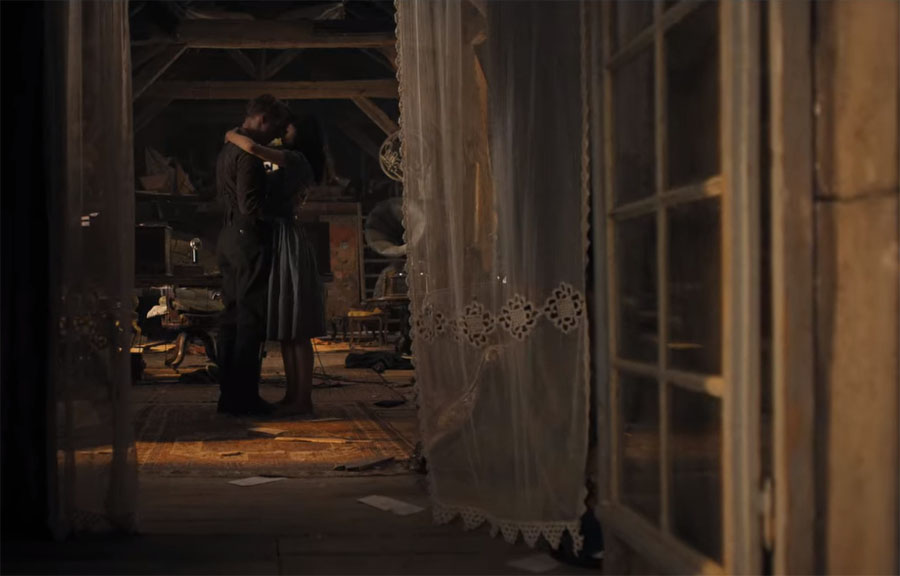
LISTEN
on Spotify to “Clair de Lune” by Jean-Yves Thibaudet, 2009
LISTEN
to Clair de Lune by Claudio Arrau pianist, recorded in 1991 when
he was 88 years old. The Suite bergamasque was first composed
by Debussy, 1890-1905. Courtesy of YouTube's Adagietto.
LISTEN
to Claude Debussy playing "Clair de Lune" in 1913. Note:
The source of the record was not an acoustic phonograph recording
but is from a piano roll created by Claude Debussy. See
Credits
below for more information.
"Clair de Lune" catches
the attention of Werner's sister Jutta in Germany as the radio
is on when Werner broadcasts his radio message and Werner and
Marie say good-bye to each other.
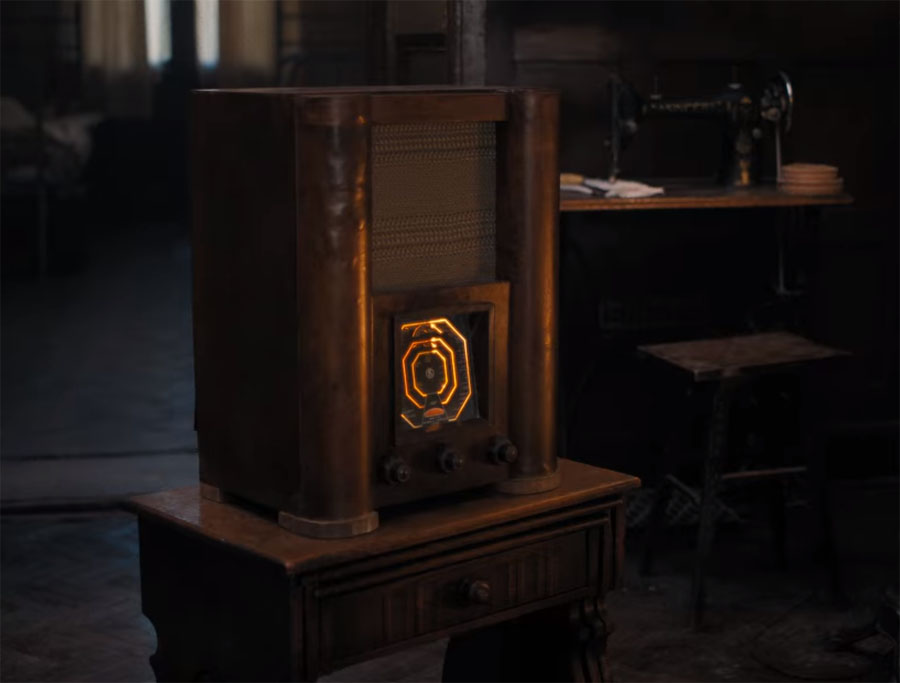
Sitting in a room Werner's sister
Jutta turns towards the radio when she hears “Clair de Lune."
Walking to the radio and hearing her brother's voice Jutta knows
that Werner is still alive. "I am still on the same frequency
in my head," Werner tells his sister over the radio.
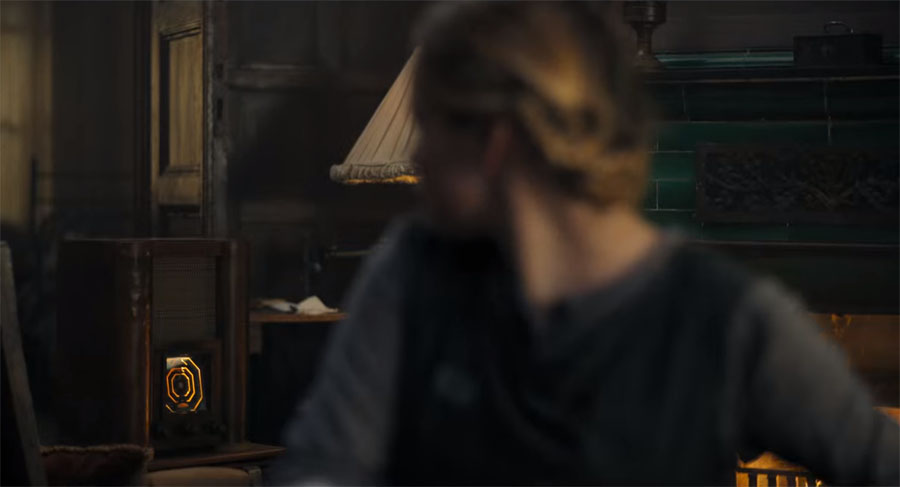
The emotional power
of music like "Clair de Lune" and the wonder of the
radio delivering Werner's voice to his sister hundreds of miles
away is a poignant moment in the story. Jutta embraces the radio
in pure joy. The radio, like music, is a connector on many levels,
and although Werner had grown up illegally listening to the Professor
on its French station, it was how Werner had connected with the
world of ideas; connected with the Professor and Marie; and now
reconnected with his sister.
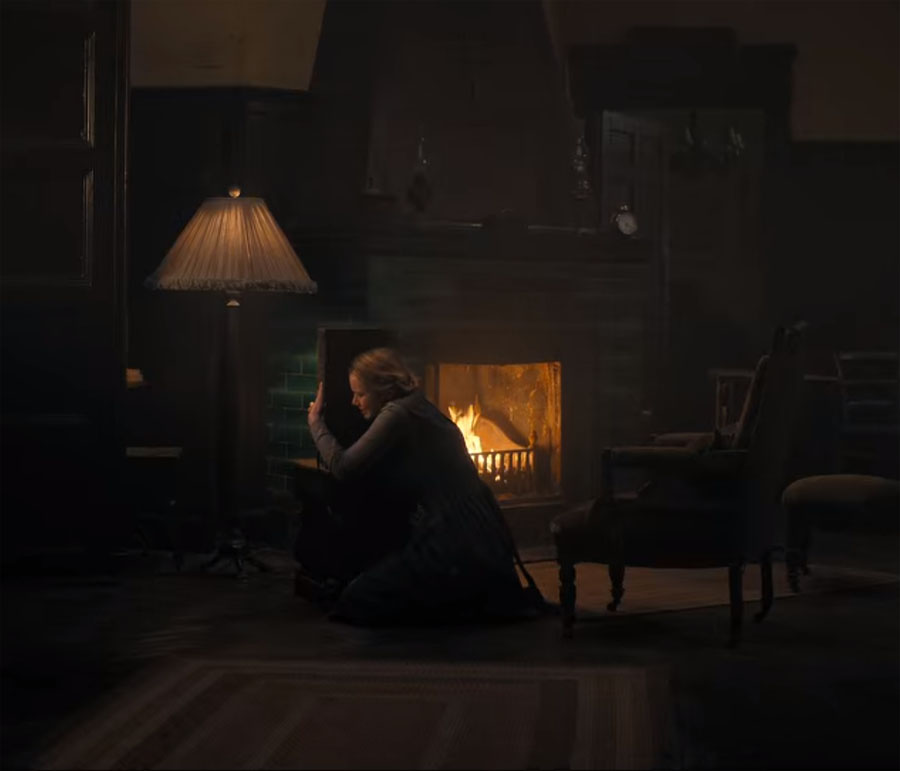
The other phonograph scene in this
movie is a record played of the sound of birds on a portable phonograph.
Marie's father had taken her to Paris's National Museum of Natural
History where he was principal locksmith. In the scene he winds
up the phonograph and plays the recorded sound of birds. And they
listen.
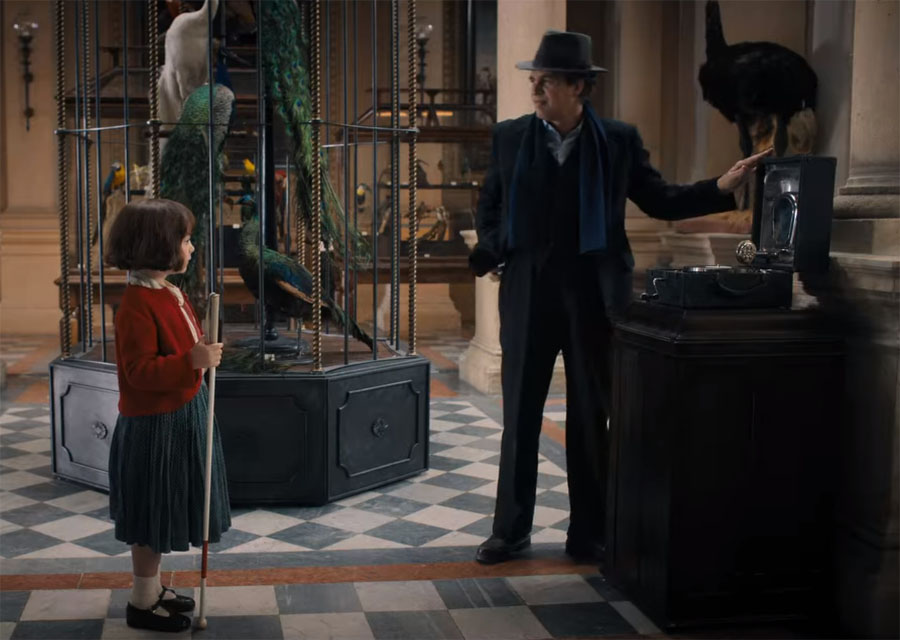
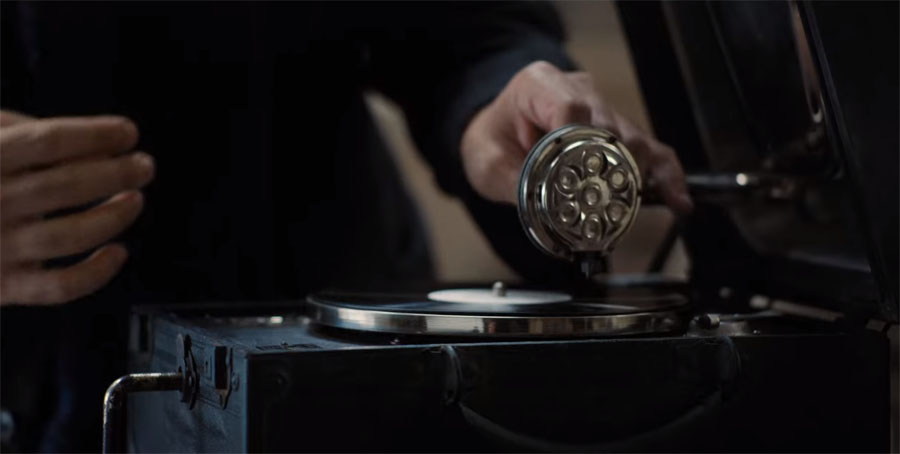
CREDITS and more information
related to Debussy and "Clair de Lune."
All screenshots for this PhonoMovie
are courtesy of NETFLIX.
The following comes from YouTube's
Adagietto
- Debussy plays Debussy | Clair de Lune (1913) and provides
information about the piano rolls made by Debussy.
From 1903 to 1913, Claude
Debussy recorded several of his own pieces on piano rolls.
Debussy was delighted with the reproduction quality, saying
in a letter to Edwin Welte: “It is impossible to attain a
greater perfection of reproduction than that of the Welte
apparatus. I am happy to assure you in these lines of my astonishment
and admiration of what I heard. I am, Dear Sir, Yours Faithfully,
Claude Debussy.” More than one century old, these recordings
allow us to listen to the great composer playing his own works.
Debussy made his last recordings when he was 52 years old
and suffering from cancer, in 1913. He died less than five
years later, on March 25, 1918.
Rolls for the reproducing
piano were generally made from the recorded performances of
famous musicians. Typically, a pianist would sit at a specially
designed recording piano, and the pitch and duration of any
notes played would be either marked or perforated on a blank
roll, together with the duration of the sustaining and soft
pedal. Reproducing pianos can also re-create the dynamics
of a pianist's performance by means of specially encoded control
perforations placed towards the edges of a music roll, but
this coding was never recorded automatically. Different companies
had different ways of notating dynamics, some technically
advanced (though not necessarily more effective), some secret,
and some dependent entirely on a recording producer's handwritten
notes, but in all cases these dynamic hieroglyphics had to
be skillfully converted into the specialized perforated codes
needed by the different types of instrument.
The playing of many pianists
and composers is preserved on reproducing piano roll. Gustav
Mahler, Camille Saint-Saëns, Edvard Grieg, Teresa Carreño,
Claude Debussy, Manuel de Falla, Scott Joplin, Sergei Rachmaninoff,
Sergei Prokofiev, Alexander Scriabin, Jelly Roll Morton and
George Gershwin are amongst the composers and pianists who
have had their performances recorded in this way.
This comment was made in the Adagietto
string "Debussy plays Debussy" by @marianneoelund2940
in 2020:
Debussy made this recording
of Clair de Lune, and 13 other pieces, onto a set of 6 rolls
using a Welte-Mignon reproducing piano, also known simply
as a "Mignon."
The Mignon was unique in
that it recorded the nuances of a player's performance, including
dynamics and pedaling, thus the result can be far more expressive
than the more typical player-piano roll reproductions.
"Clair de Lune" is a
French poem written by Paul Verlaine in the year 1869. It is
the inspiration for the third and most famous movement of Debussy's
1890 Suite bergamasque of the same name. 'Clair de lune' ('Moonlight')
is from Verlaine's early collection Fêtes galantes (Gallant
Parties, 1869). (Ibid. Adagietto).
Not to be confused with "Au
clair de la lune" the French folk song of the 18th century ('By
the Light of the Moon') they are both French and both about
the moon. For Friends of the Phonograph "Au clair de
la lune" is where the history of recorded sound begins with
10 seconds of that poem spoken by Frenchman Édouard-Léon Scott
de Martinville recorded on his Phonautograph on April 9, 1860.
Scott's Phonautograph was not
conceived or designed to play back sound but computer technology
altered that original limitation. The 1860 recording of Scott's
voice reciting "Au clair de la lune" was heard for
the first time in 2008 because of the work done by First
Sounds and its team, the software developed at Lawrence
Berkeley National Laboratory, modifications to the application,
additional signal processing and the manual correction of the
time signal. It's a remarkable story which should
be read, and also supported as there is more to be done.
The sound recordings of Édouard-Léon
Scott de Martinville has been recognized as Humanity's First
Recordings of Its Own Voice and celebrated as the patrimony
of all mankind. (Ibid. First Sounds)
Listen HERE to the Download
mp3: Au Clair de la Lune
(May 2010 release #44) courtesy of First
Sounds.
It is also fascinating that Claude
Debussy's "Clair de lune" has nothing to do with "Au
clair de la lune" but Debussy did use the melody of "Au
clair de la lune" in another one of his songs, Pierrot.
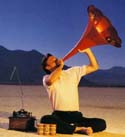
Phonographia
|